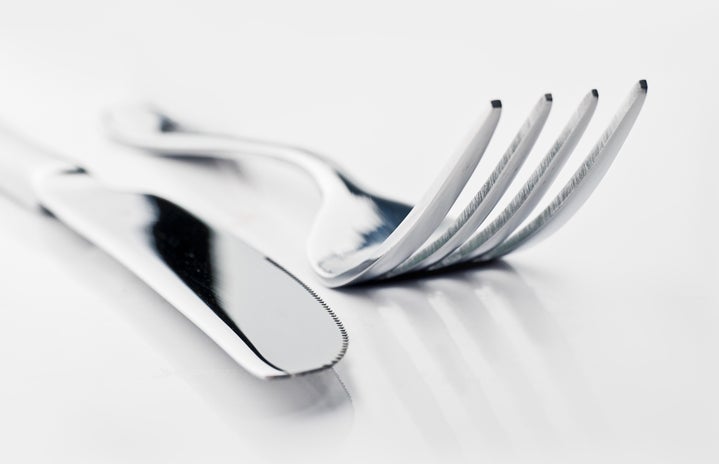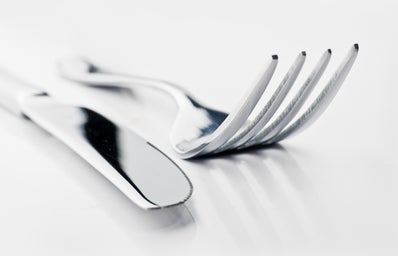Sometimes we’ll just get an intense craving for our favorite treats out of nowhere. You know the feeling—all of a sudden you want potato chips, and you can think of literally nothing else until you get your hands on them. Luckily, there are healthy ways to beat those cravings! Whenever you’re dreaming of junk food, try swapping out those not-so-healthy snacks with these alternatives.
1. Chocolate
Whoever said diamonds were a girl’s best friend must have momentarily forgot about chocolate. Whether you’re on your period or you just finished dinner and you need something sweet, chocolate cravings can be intense and seemingly impossible to ignore.
Unfortunately, the smooth richness of chocolate packs in a lot of sugar and saturated fat: the typical milk chocolate bar has 235 calories, 13 grams of fat (20 percent of your daily value), 8 grams of saturated fat (40 percent of your daily value) and 23 grams of sugar. With stats like that, a few squares can start to add up—especially when having a square or two turns into polishing off the whole bar (hey, we’ve all been there).
Alternative: Homemade hot cocoa
Instead of reaching for the nearest chocolate bar or fudge brownie, satisfy your craving for chocolate with a mug of homemade hot cocoa. It’ll take just two minutes to make, and better yet, it only has 40 calories, 3 grams of fat and zero grams of sugar (before adding the whipped cream).
Pour a cup of unsweetened almond milk into a mug and stir in one tablespoon of unsweetened cocoa powder and one packet of no-calorie sweetener, like Splenda or stevia. Pop it in the microwave for about two minutes, until it’s hot. Top with one to two squirts of whipped cream (or none at all!) and enjoy!
2. Pizza
It’s no secret that college students love pizza. There are probably a ton of pizza shops in your college town, and they’re all waiting for you to call them in the wee hours of the night while you’re up late studying for exams. But just one slice of a 12-inch cheese pizza contains about 10 grams of fat, 462 milligrams of sodium and 26 grams of carbs.
Alternative: Make-your-own pizza
It’s all too easy to grab a slice when you’re walking around campus or get a box delivered right to your door, but with a few ingredient swaps, you can actually make your own healthy pizza without much more effort. Elina Tarkazikis, a senior at Ramapo College, says when she and her roommates crave pizza, they usually substitute the heavy pizza dough with a tortilla. “We take a carb-smart wheat tortilla and put some light sauce on half of it and sprinkle on two percent shredded cheese over the sauce, then fold it up,” she says. “You can cook it on the skillet or in the oven.” You can also add veggies to your pizza to fill you up and add more nutrients.
You could also use a whole-wheat pita pocket or a Portobello mushroom cap as your pizza base. Or, check out this awesome recipe that Elina and her friends have tried for a cauliflower pizza base.
3. Pasta
College students are notorious for eating ramen and Easy Mac, and who could blame us? Pasta is cheap, easy to make and undeniably delicious. But whether it’s a giant bowl of gourmet spaghetti and meatballs from your favorite Italian restaurant near campus or a microwavable Cup Noodles that you’re craving, pasta isn’t the healthiest choice out there. It’s a refined carbohydrate, which means it packs in calories but not many other valuable nutrients, so it’s not doing you too many favors in the health department.
Alternative: Spaghetti squash
Regular pasta is stripped of its vitamins, nutrients and fiber in the refining process. Luckily, there’s a way to get noodles that have all the good stuff. Spaghetti squash is a type of squash that, when cooked, gives way to strands that look just like spaghetti. Squash is high in vitamins and fiber and contains nowhere near the amount of calories as regular pasta, as one cup of cooked spaghetti has about 220 calories while one serving of spaghetti squash strands has only about 30 calories. The other good news? You can still top it with your favorite pasta sauce! Read this Collegiette Eats post on how to cook spaghetti squash so the next time a pasta craving strikes, you’ll know just what to make.
4. Fruit-flavored yogurt
If you’re guilty of skipping a nutritious breakfast when you’re in a hurry, you may reach for pseudo-healthy, on-the-go breakfast foods such as fruity yogurt. However, fruit-flavored yogurt rarely contains actual fresh fruit. That “fruit” at the bottom is actually doused in thick syrups and preservatives and usually contains more sugar than it does protein and nutrients.
Alternative: Greek yogurt with fresh fruit
Switching to Greek yogurt will give you twice the amount of protein per serving than regular yogurt. One serving of Greek yogurt can contain anywhere between 15-20 grams of protein compared to the 9 grams that you would get from flavored yogurt. Adding your own fresh fruit to the yogurt will help you to avoid eating all the sugar that flavored yogurt contains.
Phyu-Sin, a junior at Mount Holyoke College, recently became a vegetarian and says yogurt is her power breakfast. “Plain Greek yogurt with fruit and a few spoons of ground flaxseeds give the yogurt a sweet and tangy flavor and it helps me from getting too hungry throughout the day,” she says.
5. Potato Chips
As delicious and convenient as they are to have on hand, it’s no secret that potato chips are an unhealthy snack. One serving of Lay’s Classic Potato Chips (15 chips) contains 160 calories, but you don’t get much for your calories. The average bag of potato chips is also packed with a ton of sodium—hence why it’s hard to just stop at one chip—and unhealthy saturated fat, but the chips are totally devoid of any healthy nutrients.
Alternative: Kale chips
Kale chips are an easy snack that can either be store-bought or homemade. Kale is a very nutrient-dense vegetable—one chopped cup delivers more than 100 percent of your recommended daily value of Vitamin A and Vitamin C for only 33 calories.
To make kale chips, wash and dry the kale leaves and tear them into bite-sized pieces. Drizzle them with olive oil and season with a little bit of salt and pepper and any additional seasonings you desire. Bake on a baking sheet in the oven for 10 to 15 minutes, until the edges are brown. Keep your eye on them in the last few minutes, because they can burn fast!
6. Candy
Our parents and elementary school teachers warned us how unhealthy candy can be, and sadly, they were right. From gummies and sour straws to peanut butter cups and caramel creams, there is no shortage of candy options out there, and they tend to be in the most tempting places, like right at the checkout line. Fun-sized candy may sound harmless, but you’re getting nothing but sugar and empty calories out of it.
Alternative: Frozen fruit
Fruit, or “nature’s candy,” can remedy a sweet tooth thanks to its natural sugars. While fresh fruit works too, frozen fruit will give you more of a dessert-y satisfaction.
“My mum used to put grapes in the freezer and say that they were sweets,” says Florence, a junior at Exeter University. “It works, and it’s an absolutely delicious treat!” In addition to grapes, try frozen mango chunks or frozen berries (like strawberries or blueberries) for a similar candy-like treat.
Another great frozen-fruit gem? Bananas! Blending a frozen banana is a healthy but still super-yummy alternative to ice cream. Freeze a whole banana and blend it to satisfy an ice-cream craving, or freeze slices of bananas to beat your candy cravings.
As college students, we don’t always pay too much attention to what we put in our bodies, which makes it difficult to fight cravings. However, if you pay closer attention to the nutritional value of what you eat, you can fuel your body the right way and feel your best. Eating well is easier said than done, but swapping out your not-so-healthy favorites with a few healthier alternatives will definitely pay off in the end.

